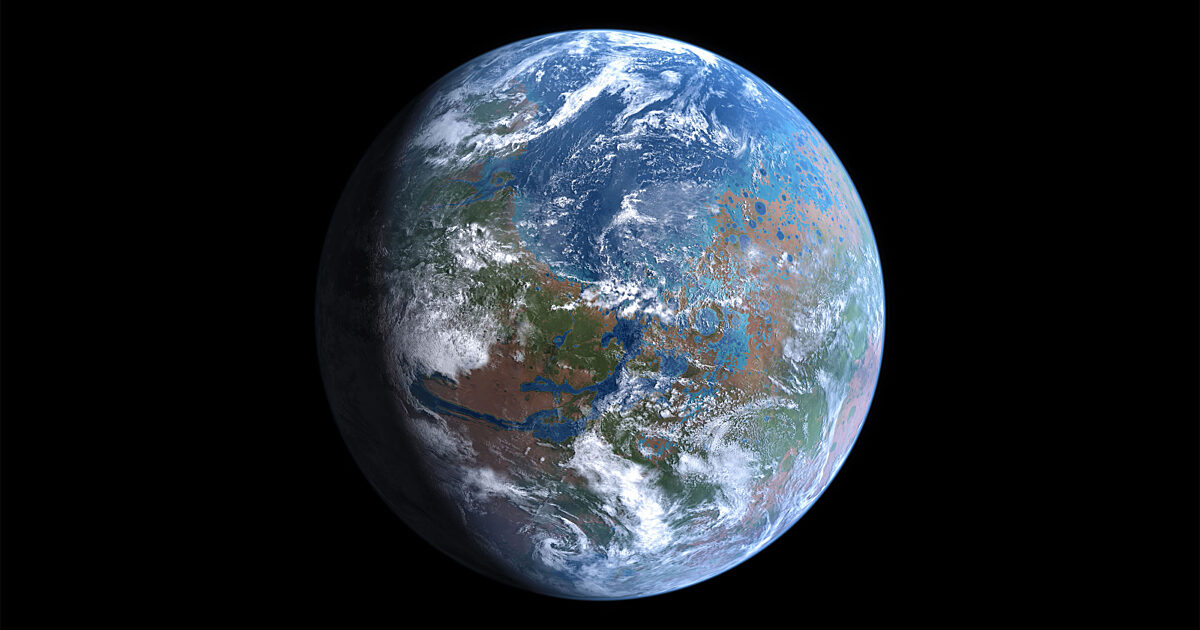Scientists have created the first model of the evolution of the Martian atmosphere. It suggests that at the beginning of its history, this planet had an atmosphere 1,000 times denser than it is now. This allowed liquid water and complex organic molecules to exist on its surface.

First model of the evolution of the Martian atmosphere
Scientists from the SETI Institute have provided new evidence that Mars once was wet and warm. They collected data on its internal structure and created the first model of how the atmosphere of this planet developed.
The initial position of this theory, previously practically ignored, is the fact that the surface of Mars was originally molten. Under these conditions, a primary atmosphere should have formed on it, which mainly consisted of molecular hydrogen and water vapor. Its density was about a thousand times greater than it is now.
At the same time, as on ancient Earth, water vapor was mainly concentrated near the surface of the planet, and hydrogen rose into the upper atmosphere. This created a powerful greenhouse effect, which allowed liquid water to exist on the surface of the planet.
Scientists believe that due to this, a warm and humid climate on Mars could have existed for millions of years. But gradually molecular hydrogen was carried out into space, and water vapor fell to the surface of the planet by rain.
When did Mars become the way we know it?
The fact that Mars had an atmosphere of the lightest element of the periodic table is proved by studies of samples of its surface and the ratio of deuterium to hydrogen in them. The first of them is heavier, and therefore it is the second that the atmosphere of Mars has been losing during these millions of years. There are simply no other mechanisms that could change the ratio of the two isotopes.
Martian meteorites, mainly consisting of igneous rocks, have the same ratio of deuterium to hydrogen as their terrestrial counterparts. It is the same for volcanic samples that date back to the first million years of the planet’s existence. They prove that there was a lot of hydrogen in its atmosphere at that time.
But in the samples of Martian clays examined by the Curiosity rover, this ratio is three times higher. They date back to an age of about 3 billion years. This indicates that up to this time, liquid water on the surface of Mars continued to exist, but most of the hydrogen from the atmosphere had already disappeared.
The researchers also drew attention to the fact that the hydrogen atmosphere was quite favorable for the emergence of life. After all, prebiotic molecules are more easily formed in such conditions, and not when there is a lack of this chemical element.
According to Рhys.org
Follow us on Twitter to get the most interesting space news in time
https://twitter.com/ust_magazine
